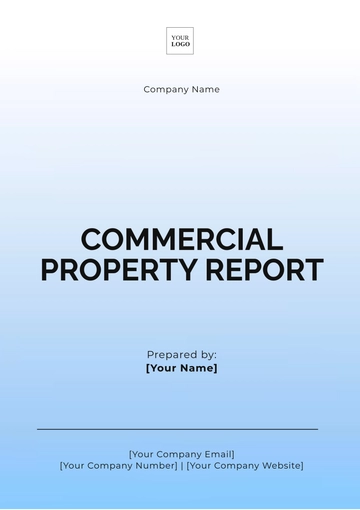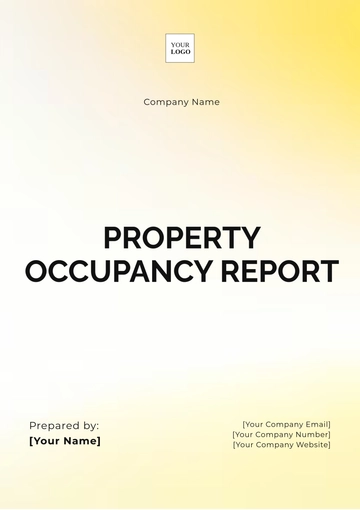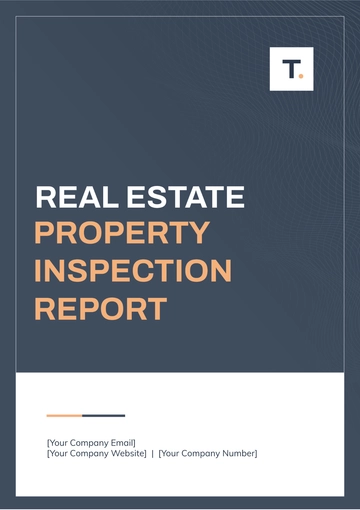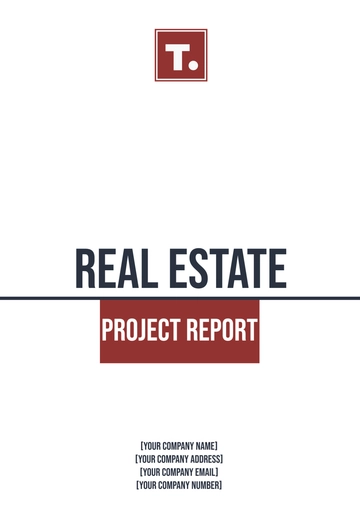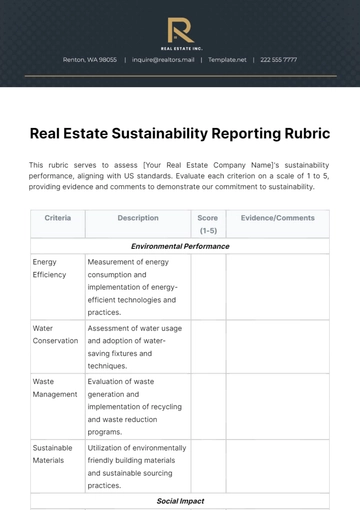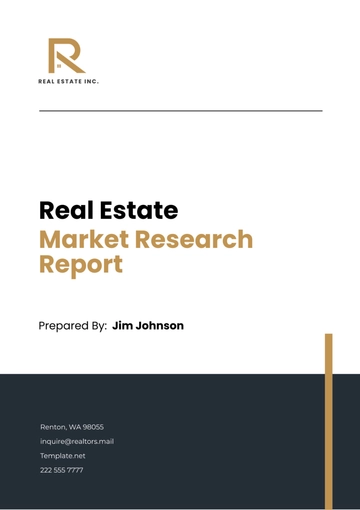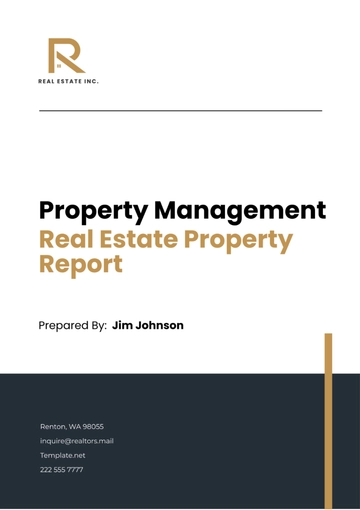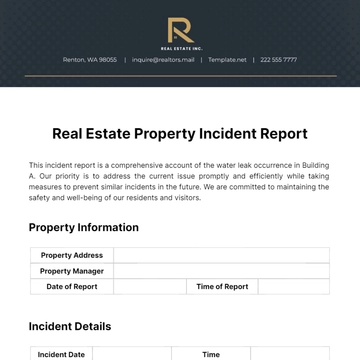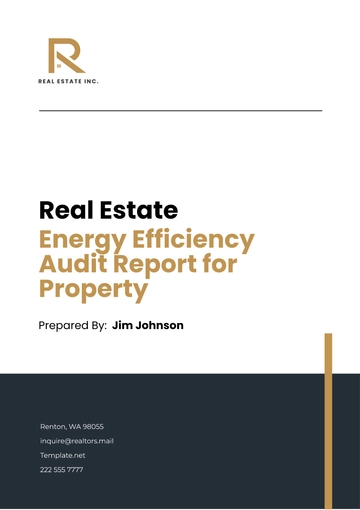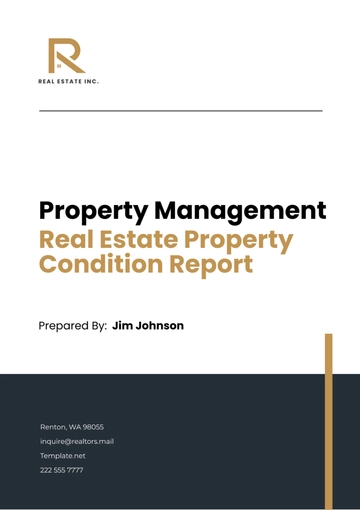Free Real Estate Market Research Report
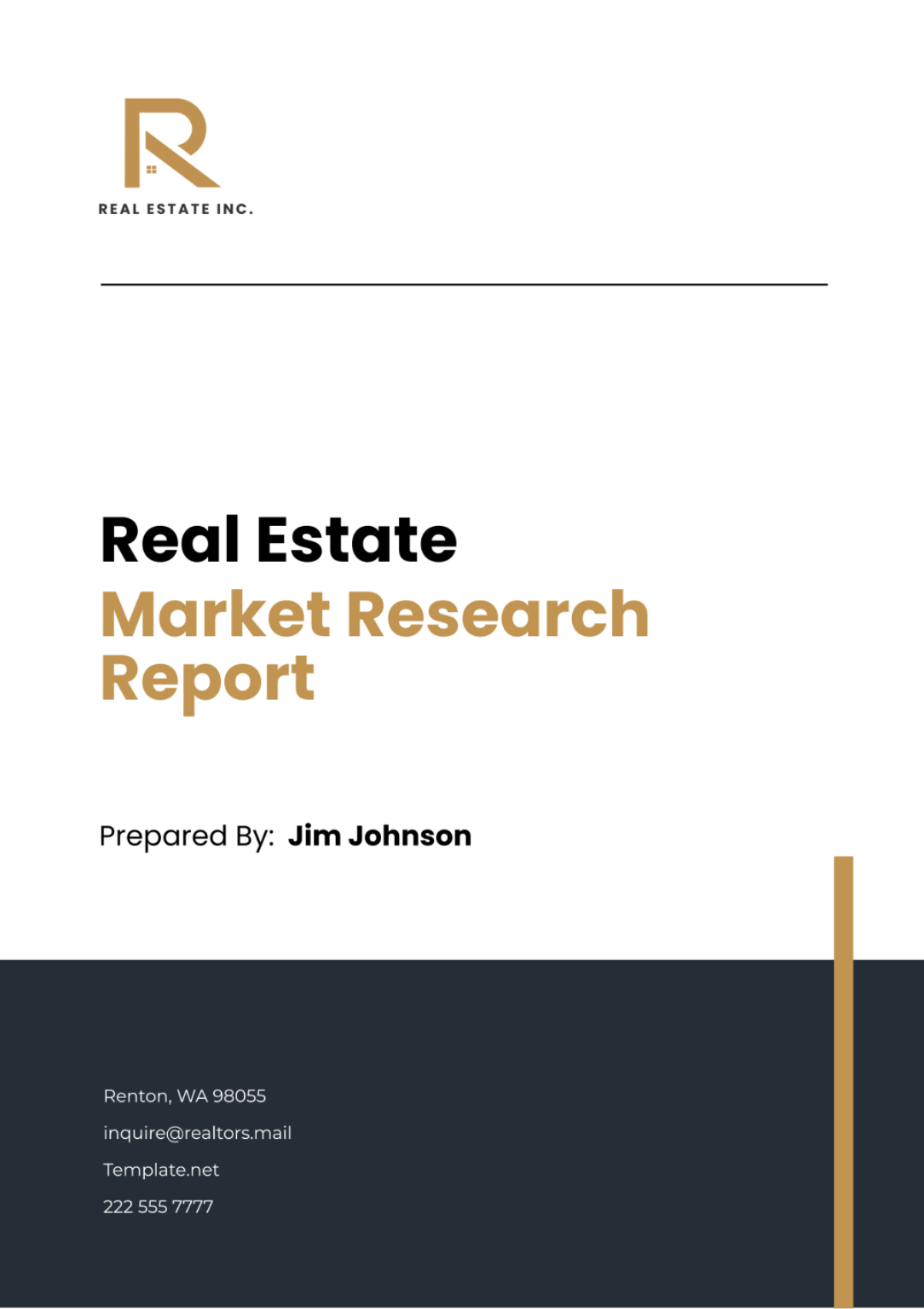
I. Executive Summary
The real estate market in [Your Company Name] has experienced significant growth over the past decade, driven by robust economic fundamentals and demographic trends. Despite the challenges posed by the recent global pandemic, the market has shown resilience, with key indicators suggesting a strong recovery trajectory. Residential property prices have remained stable, supported by low-interest rates and steady demand from both homeowners and investors. Commercial real estate sectors, particularly office and industrial, have witnessed increased demand from technology companies and e-commerce firms, driving leasing activity and new development projects. However, supply constraints and regulatory uncertainties present challenges for future growth. Based on our analysis, we recommend that investors remain cautiously optimistic, focusing on markets with strong fundamentals and growth potential.
II. Introduction
The [Your Company Name] real estate market encompasses a diverse range of residential, commercial, and industrial properties located within the [Geographical Coverage] region. This report aims to provide a comprehensive analysis of key market trends, drivers, and opportunities shaping the real estate landscape. Our research methodology involves gathering data from various sources, including government agencies, real estate databases, industry reports, and interviews with local experts. By examining economic, demographic, and market-specific factors, we seek to offer valuable insights to investors, developers, and other stakeholders navigating the [Your Company Name] real estate market.
III. Market Overview
The [Your Company Name] real estate market has emerged as a dynamic and competitive landscape characterized by steady growth and diversification. With a population of over [000], the market offers a diverse pool of potential buyers and tenants across various demographic segments. Recent years have seen increased urbanization and infrastructure development, enhancing the overall livability and attractiveness of the region. Major economic drivers which contribute to job creation and drive demand for residential and commercial properties. Notable landmarks and attractions, coupled with a vibrant cultural scene, further bolster the market's appeal to residents and businesses alike.
IV. Economic Analysis
The economic landscape of [Your Company Name] is marked by sustained growth and resilience, despite global economic uncertainties. Over the past five years, the region has consistently outperformed national averages in terms of GDP growth, fueled by a diverse economy driven by sectors. Low unemployment rates and a skilled workforce have attracted businesses and professionals to the area, stimulating demand for housing and commercial space. Additionally, favorable interest rates and access to capital have supported real estate investment activity, contributing to the market's overall stability and growth potential.
V. Demographic Analysis
Demographic trends in [Your Company Name] underscore its status as a dynamic and rapidly evolving market. Population growth has outpaced national averages, driven by factors such as inward migration, natural population increase, and a relatively young population profile. The median age in the region is [00], with a significant portion of the population belonging to the [00-00] demographic cohort. Household formation rates remain robust, supported by favorable economic conditions and lifestyle preferences. Furthermore, ongoing urbanization trends have led to increased demand for urban-centric housing solutions and mixed-use developments, catering to the diverse needs of residents.
VI. Market Segmentation
Residential Market Analysis
The residential real estate market in [Your Company Name] is characterized by a diverse range of housing options catering to varying preferences and income levels. Single-family homes dominate the market, with well-established suburban neighborhoods offering spacious properties and family-friendly amenities. However, there is a growing trend towards urban living, particularly among young professionals and empty nesters, driving demand for condominiums and townhouses in downtown areas. Rental properties also play a significant role in the market, with strong demand for both traditional apartments and luxury rental units. Additionally, affordable housing initiatives and mixed-income developments are gaining traction to address housing affordability challenges and promote inclusive growth.
Commercial Market Analysis
The commercial real estate sector in [Your Company Name] is experiencing robust activity across multiple asset classes. The office market is witnessing increasing demand from technology companies, finance firms, and co-working operators, driving leasing activity and pushing rental rates higher in prime business districts. Similarly, the industrial market is thriving, fueled by e-commerce growth and logistics expansion, leading to strong demand for distribution centers and last-mile facilities. Retail dynamics are evolving, with a shift towards experiential retail concepts and mixed-use developments that integrate retail, dining, entertainment, and residential components. Overall, the commercial market in [Your Company Name] presents diverse opportunities for investors and developers seeking to capitalize on the region's economic vibrancy and business-friendly environment.
VII. Market Dynamics
Supply-side Analysis
The supply of real estate properties in [Your Company Name] is influenced by various factors, including land availability, construction activity, and regulatory constraints. While there has been significant development activity in certain submarkets, supply remains constrained in others due to land scarcity and zoning regulations. Residential developers are focusing on infill development and redevelopment projects to maximize land use efficiency and meet growing housing demand. In the commercial sector, developers are increasingly incorporating sustainable design principles and technology-driven solutions to enhance the functionality and appeal of their properties.
Demand-side Analysis
Demand for real estate in [Your Company Name] remains robust, driven by population growth, economic expansion, and lifestyle preferences. Homebuyers continue to seek properties that offer convenience, affordability, and desirable amenities, leading to strong sales activity in established neighborhoods and emerging urban hubs. Similarly, businesses are drawn to locations with access to talent, transportation infrastructure, and business-friendly policies, fueling demand for office and industrial space. However, affordability concerns and supply shortages pose challenges, particularly for first-time homebuyers and small businesses looking to establish a presence in the market. Overall, balancing supply and demand dynamics will be critical to sustaining the market's growth and competitiveness in the long term.
VIII. Competitive Analysis
In [Your Company Name]'s real estate landscape, competition among market players is fierce, with numerous developers, investors, and brokerage firms vying for market share. Major real estate developers such as [Developer Name] and [Developer Name] have established a strong presence in the market, known for their high-quality projects and innovative designs. Additionally, institutional investors and real estate investment trusts (REITs) such as [Company A] and [Company B] play a significant role, acquiring and managing large portfolios of properties across various asset classes. Brokerage firms like [Brokerage Name] and [Brokerage Name] are instrumental in facilitating transactions and providing market insights to clients. Furthermore, niche players specializing in specific property types or market segments contribute to the market's diversity and competitiveness, offering unique value propositions to investors and end-users.
IX. Investment Analysis
Investing in the [Your Company Name] real estate market presents compelling opportunities for both domestic and international investors seeking stable returns and portfolio diversification. With a track record of consistent growth and resilience, the market appeals to institutional investors, pension funds, and private equity firms looking to deploy capital in stable, income-generating assets. Residential properties offer potential for capital appreciation and rental income, particularly in high-demand submarkets with limited supply. Likewise, commercial properties, including office buildings and industrial warehouses, attract investors seeking long-term leases and steady cash flows. Moreover, the market's favorable regulatory environment, transparent legal system, and sound property rights protection enhance its attractiveness to foreign investors looking to deploy capital in emerging markets.
X. Regulatory Environment
The regulatory framework governing the [Your Company Name] real estate market plays a crucial role in shaping development patterns, land use policies, and investment decisions. Zoning laws and land use regulations dictate permissible land uses, density requirements, and building heights, influencing the supply of real estate properties in different submarkets. Environmental regulations aim to protect natural resources and mitigate the impact of development on the ecosystem, requiring developers to adhere to strict standards and obtain necessary permits before commencing construction. Additionally, tax policies, including property taxes and transfer taxes, impact the cost of real estate transactions and ownership, influencing investment decisions and market liquidity. Understanding and navigating the regulatory landscape is essential for investors, developers, and other stakeholders operating in the [Your Company Name] real estate market.
XI. Market Trends and Forecast
Recent trends in the [Your Company Name] real estate market indicate a continuation of key themes such as urbanization, sustainability, and technology integration. Urbanization trends are expected to persist, driving demand for mixed-use developments, transit-oriented projects, and walkable neighborhoods. Sustainability considerations, including energy efficiency, green building certifications, and renewable energy sources, are becoming increasingly important for both developers and tenants. Furthermore, technology is reshaping the real estate landscape, with advancements in data analytics, proptech solutions, and smart building technologies enhancing operational efficiency and tenant experiences. Looking ahead, forecasts suggest steady growth in property values, rental rates, and leasing activity, supported by favorable economic fundamentals and demographic trends. However, potential risks such as interest rate fluctuations, geopolitical uncertainties, and regulatory changes warrant careful monitoring and risk mitigation strategies.
XII. Conclusion and Recommendations
In conclusion, the [Your Company Name] real estate market presents an array of opportunities and challenges for investors, developers, and other stakeholders. Despite uncertainties stemming from global economic conditions and regulatory changes, the market's strong fundamentals and diverse asset classes offer resilience and growth potential. To capitalize on these opportunities, stakeholders are advised to adopt a strategic approach, focusing on markets with favorable supply-demand dynamics, strong economic fundamentals, and growth prospects. Additionally, embracing innovation, sustainability, and technology-driven solutions can enhance competitiveness and long-term value creation. Overall, proactive risk management, market intelligence, and strategic partnerships will be instrumental in navigating the complexities of the [Your Company Name] real estate market and achieving sustainable growth and success.
- 100% Customizable, free editor
- Access 1 Million+ Templates, photo’s & graphics
- Download or share as a template
- Click and replace photos, graphics, text, backgrounds
- Resize, crop, AI write & more
- Access advanced editor
Elevate your real estate analysis with Template.net's cutting-edge Real Estate Market Research Report Template. This editable and customizable resource is powered by an intuitive AI Editor Tool, empowering you to tailor every detail to perfection. Explore market trends effortlessly and craft comprehensive reports tailored to your needs. With Template.net, unlock limitless possibilities in real estate research.
You may also like
- Sales Report
- Daily Report
- Project Report
- Business Report
- Weekly Report
- Incident Report
- Annual Report
- Report Layout
- Report Design
- Progress Report
- Marketing Report
- Company Report
- Monthly Report
- Audit Report
- Status Report
- School Report
- Reports Hr
- Management Report
- Project Status Report
- Handover Report
- Health And Safety Report
- Restaurant Report
- Construction Report
- Research Report
- Evaluation Report
- Investigation Report
- Employee Report
- Advertising Report
- Weekly Status Report
- Project Management Report
- Finance Report
- Service Report
- Technical Report
- Meeting Report
- Quarterly Report
- Inspection Report
- Medical Report
- Test Report
- Summary Report
- Inventory Report
- Valuation Report
- Operations Report
- Payroll Report
- Training Report
- Job Report
- Case Report
- Performance Report
- Board Report
- Internal Audit Report
- Student Report
- Monthly Management Report
- Small Business Report
- Accident Report
- Call Center Report
- Activity Report
- IT and Software Report
- Internship Report
- Visit Report
- Product Report
- Book Report
- Property Report
- Recruitment Report
- University Report
- Event Report
- SEO Report
- Conference Report
- Narrative Report
- Nursing Home Report
- Preschool Report
- Call Report
- Customer Report
- Employee Incident Report
- Accomplishment Report
- Social Media Report
- Work From Home Report
- Security Report
- Damage Report
- Quality Report
- Internal Report
- Nurse Report
- Real Estate Report
- Hotel Report
- Equipment Report
- Credit Report
- Field Report
- Non Profit Report
- Maintenance Report
- News Report
- Survey Report
- Executive Report
- Law Firm Report
- Advertising Agency Report
- Interior Design Report
- Travel Agency Report
- Stock Report
- Salon Report
- Bug Report
- Workplace Report
- Action Report
- Investor Report
- Cleaning Services Report
- Consulting Report
- Freelancer Report
- Site Visit Report
- Trip Report
- Classroom Observation Report
- Vehicle Report
- Final Report
- Software Report

